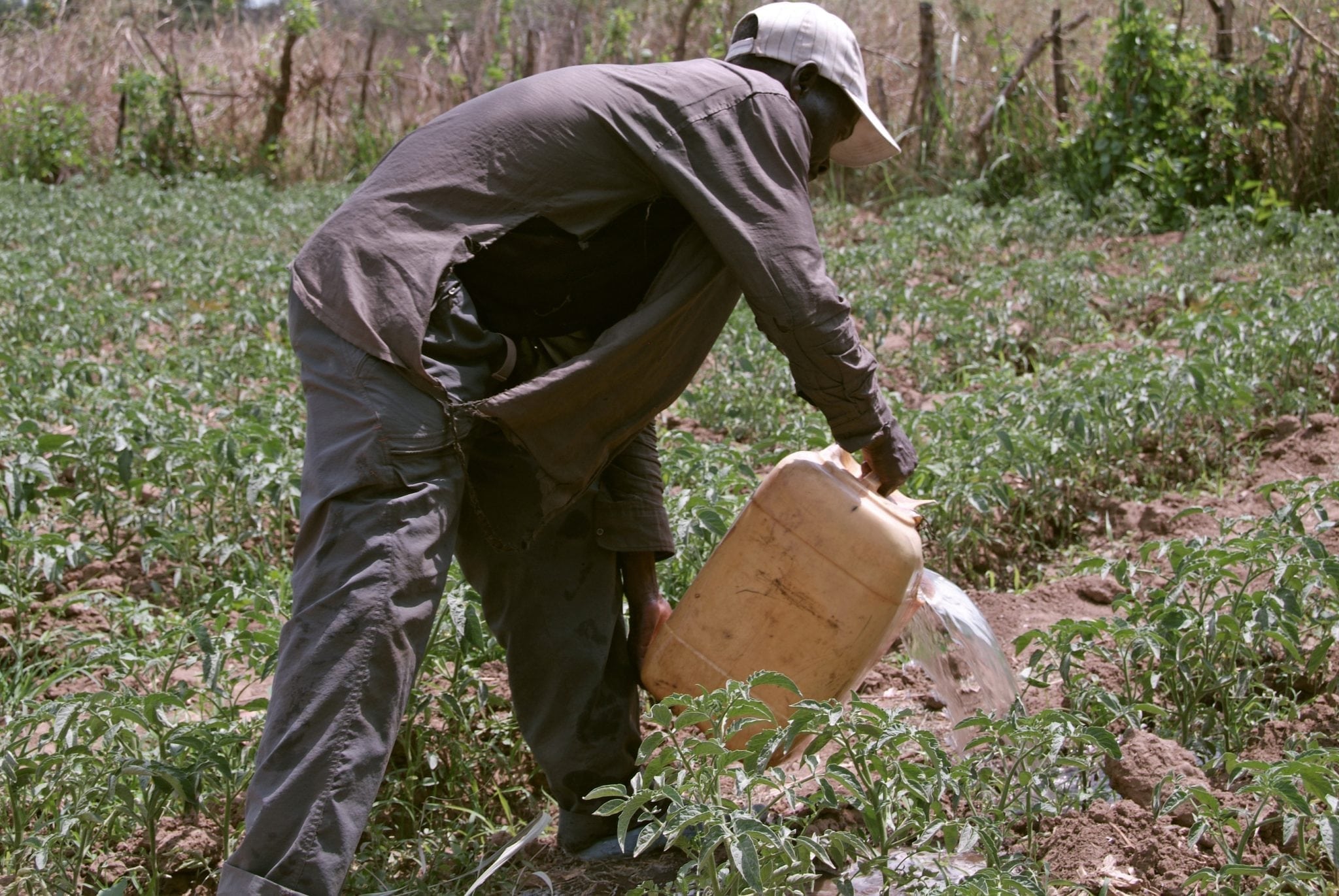
Sridevi Govindaraj tours a banana plantation, which is one of the crops that she tested with human urine as a fertilizer. Photo courtesy of Sridevi Govindaraj
Consider these facts about urine: Adults produce about four to eight cups (one to two liters) per day, it’s a reservoir of nitrogen, potassium and phosphorus, the same elements that nourish crops; and it’s cheap to make.
That’s the kind of information that Sridevi Govindaraj, an Indian agriculture expert, had in mind when she proposed that dousing fields with urine could improve sanitation and boost farmers’ incomes.
“Human urine is indeed not an unwanted waste, but it is a useful resource,” Sridevi wrote to E4C.
Urine, it turns out, is a huge and mostly untapped reserve of crop fertilizer. If Indians collected and applied 40 percent of their urine, the country could save $26.7 million (1.2 billion rupees) in fertilizer costs, Sridevi calculates.
A unique field
Those figures are from her doctoral thesis at the University of Agricultural Sciences, Bangalore in 2009, with research funded by the Arghym foundation. Sridevi may be the only person in India with a doctorate in ecological sanitation.
The urine proposal
She proposes using urine in conjunction with regular fertilizers. People would collect it in specially rigged toilets, like EcoSan latrines. Or, in lieu of a commercial product, DIY attachments to toilets in the men’s room are cheap and easy to make.
The experiment
Sridevi tested urine on maize, bananas, radishes, tomatoes, millet and French beans, all with encouraging results. In nearly all cases, urine outperformed chemical fertilizers, she says.
“Now many farmers adopted our technology and implemented it in their own field,” Sridevi says.
More tips and fun facts
Application to the fields works best with a diluted mixture of five parts water to one part urine. A drip irrigation system can help avoid health hazards. And Sridevi suggests using airtight containers to store the urine and gloves to transport and apply it.
Urine is packed with the nutrients plants need. In 22 gallons (100 liters), there are more than 10oz (300gm) of nitrogen, 6oz (170gm) of phosphorous, and 5.6oz (160gm) of potassium. Plus, it has almost every other essential and secondary nutrient that plants can use, Sridevi says.
[quote]“Human urine can be effectively used in agriculture for food production will lessen our dependency on commercial fertilizer.” [/quote]


hi
I WOULD JUST LIKE TO KNOW WHAT WOULD HAPPEN IF THEIR WAS BLOOD IN THE URINE?
THANKS
MEGAN
Blood in the urine could be a sign of a serious medical condition. I’d suggest that the person see a doctor to address that problem first. Fertilizing the crops can probably wait!
Has any progress has happened?
I am interested to know everything about this project?
I AM GOING TO TRY IT OUT ON MY FLOWER BED FIRST AND SEE THE RESULT THEN APPLY IT TO THE CROPS IN MY GARDEN. THANKS FOR THE INFORMATION. I WILL SHARE IT WITH MY PEOPLE WHO ARE FARMERS IN THE REMOTEST PARTS OF PAPUA NEW GUINEA.
Do we have to dilute before using ? Of so what ratio ? Would like yo experiment before sharing !
I FERTILIZED THE MONEY PLANT IN MY HOUSE WITH THE URINE. I COLLECTED URINE IN A BOTTLE KEPT THE BOTTLE IN THE SUN FOR ONE MONTH. FOR IT. AND THEN DOSED IT WITH WATER. RESULT ARE GOOD. THE PLANT IS GROWING LIKE ANY THINNG